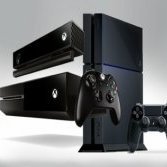Leaderboard
-
[[Template core/front/popular/memberRow is throwing an error. This theme may be out of date. Run the support tool in the AdminCP to restore the default theme.]]
[[Template core/front/popular/memberRow is throwing an error. This theme may be out of date. Run the support tool in the AdminCP to restore the default theme.]]
[[Template core/front/popular/memberRow is throwing an error. This theme may be out of date. Run the support tool in the AdminCP to restore the default theme.]]
[[Template core/front/popular/memberRow is throwing an error. This theme may be out of date. Run the support tool in the AdminCP to restore the default theme.]]
Popular Content
Showing content with the highest reputation on 06/26/19 in all areas
-
Thanks for these @matrixnetuk Not in rom dat so another SRU gem 2p_EWS_17.2.zip Enjoy.2 points
-
Yeah I've had them working and I have the s61.5's to share so we should get there in the end gents. Part of me thought all your Indy' s would have the s.61.5. Only other thing to report I have had it before where I can't use Proms from the jpemu folders but if I find the actual dumps they work (tried pillaging a emu folder for a royal flush machine). Not sure if the emu guys do anything to them? I will be working on this tomorrow night. Working another way do we know what Rom set the £6/20p is I might be able to find an alternate set.2 points
-
Hello well first of all let me start by saying I never realized how much interest there was in the product and the industries that I enjoyed as a younger man. As much as the industry was interesting and fun to be in, the company JPM, was something very special. Considering the company as we knew it ceased to exist many years ago, most of the individuals that enjoyed working together, and playing hard together, are still in contact with each other. Several people on this forum have suggested that stories about the early days might be interesting so I have decided to attempt to write some humorous lines about those days and the product. This is obviously from my point of view and so it's in a way autobiographical, but I started on the production line, went through to the test department, moved on to development, migrated to customer services promoted to customer service manager, was asked to take over development, was part of the Marketing team and then project managed the new SWP so I guess mine is a particularly wide view. If this seems self indulgent or self promoting it's not meant to be so be honest and re-direct me if I drift off subject. I still work, I enjoy working with a bunch of geeks, lunatics, and research amongst other things renewable energies, water purification and believe it or not mobile phones and beer brewing, however that's another subject altogether. Strangely, at least six of us used to work in the gaming industry, no one else from JPM, they are not that old 🤔 however several from Astra games which obviously I had a big hand in setting up. I'll gather some facts together and come back with more pertinent information. Regards Frank Bird .......... Continued ..........1 point
-
1 point
-
1 point
-
Thanks TTX Any good tips on how to play Revolution Just so I don't play it wrongly for the video. I know there is a high low gamble on cards. Are any of the marked so I know which direction to take lol. Cheers Chris2171 point
-
Ahh bloody hell! Will 're test them here tomorrow. Darren was on s61.6 too. I have got some s61.5 so I can post you both those out. Hopefully someone can step in and explain to us all later. Failing that we'll need to try more sets of proms gents1 point
-
Investigating some snipped wires behind the meter panel... Out comes the panel which reveals the final resting place of a long dead family of spiders... A better look at the wiring. I think the snipped ones are just unused ground connections for the door switches. No idea why they were cut though... Bonus! It seems that the spiders were the guardians of a hidden treasure trove. Well, 50 pence worth of old tens...1 point
-
1 point
-
Okay, found the fault. Connection was all good up to the socket plug that fits onto scorpion 2 board, it was the plug and wire 4, which was a white wire with green tag, this when from S2 to the Diode on the Pay Slide Assembly, which I re-cut and reseated into socket plug, very similar to telephone socket and that done the trick and fully booted to ready to play mode... S0 many thanks to all that helped me with this issue, would not of been easy without the information from you guys.1 point
-
Once again forgive me, these are personal observations so I’m bound to figure in them. Ok, so early to mid 1970’s. Flairs were the in thing, that and turtle neck sweaters, bright flowered shirts and JPM were reinforcing their early beginnings. We seemed to have found a recipe for machine development that combined decent technical detail and popular game play. Most of this was the brain child of Alan Parker, Howard Parker and Ron Watts the latter being the one that combined the ideas of the others into great artwork design. At this time I had moved from reel build and test onto the Control Board test and from there a step, literally a step, through a newly opened break in the wall and onto the final machine test area. In reality this was taken quite soon after I had begun my employment with JPM and I was one of only a few individuals to have worked full time in all the areas within the JPM test area although others had obviously done similar with other smaller companies. Alongside the production staff’s motley collection of vehicles, the car park was beginning to be populated by vehicles that displayed, quite rightly, the recent success of the company. BMW 5 series, Rover P6 3.5, Aston Martin ( ok second hand ) and Mercedes. Visitors regularly turned up in equally high class vehicles and it was not unusual to see the odd Rolls or Bentley parked out front as the larger than life operators and distributors, sometimes with their secretary's ( nudge nudge ) came to look around. Let me necessarily outline at this point a little about the culture at JPM. It was a Team. That is no hyperbole or unrealistic exaggeration. That phrase has been hi-jacked over the years by wannabe’s with no real substance behind their claims, but it was used as a slogan in the JPM Marketing Strategy ( photo to follow ) and quite honestly, it was the truth. There was just not an us and them. The directors had a job to do as much as we all did but they often joined in with conversations at the factory door or came to have a chat and ask how things were and if anything could be improved, and they quite often were as a result. They also bought Fish and chips ( no Domino’s in those days ) when there was a need to work late, sometimes all nighters, and it was far more that just ‘trying to stay with the boys’. One of the biggest factual statements of the team culture was the payment structure. As memory serves we were on about £30(ish) a week, now that wasn’t a lot of money and certainly less than I had been earning as a time served Joiner and latterly a Ceramic tiler, but I had to give it all up due to an injury which is why I took this temporary job in a factory! (Nothing as permanent as temporary eh) If you worked a flat 40 hours then no bonus was payable ( as I remember ) needless to say I never found out and when the shout of “Bonus is up” was shouted out, the top wage earner on the huge paper chart pinned to the wall was either Gary G, Gary P, or me or one of very few others. I have recollections of monthly pay slips boosted by over £1,000 but 70-80 hour weeks were not unusual, and you were never, never ever, late. I also have vague recollections of going over to the Plymouth Arms on bonus day, but I don’t remember going home. That is not to say that this was a constant, I remember vaguely being asked to go the cabinet shop which had a large open area that was usually filled with cabinets but on this day was ominously empty. As we all circled Jack Jones he explained about the huge downturn in business and that he had to lay off 30% of the production staff, turning around he apologised individually as he picked every third person, I did the maths and the head count pretty quickly and stayed exactly where I was but filled with fear at the possibility of being laid off for the first time in my life. A few months later most of those staff that were laid off were back anyway. However it was just a little time later when a position was advertised internally for the development department and although I had not long been married and taken on quite a mortgage, the idea of a constant flat salary, but admittedly at a considerably lower wage, appealed to me after all I could still earn a few quid on the weekend tiling if I needed to! And so it was that I left the production area and climbed the stairs ( and not just metaphorically ) to claim my bench in the development area and join a bunch of new colleagues and disciplines. L These were the TEAM ( printed on the back) give away T shirts - one was in each Cash box for a period L -> R Rob Higgins, Me, Ernie Beaver, Rob Old, Howard Parker, Huw Thomas1 point
-
1 point
-
Continuing my recollections ( stop me if I'm boring you ) The Ace building in Ferry Road was a fairly dilapidated old warehouse unit that had cracked brickwork but was nicely white painted with of course a large JPM sign. A huge concrete ceiling some 20 foot high in the main assembly area and no insulation to the walls in those days ensured that in the winter it was freezing. Offices and development were on the first floor accessible by a concrete stair case or for the prototype machines, a hoist and a steel floor with chains, no cage, HSE what's that?. The stores and the cabinet shop were across a large potholed access road that went no where except to the weed covered red brick wall that was the boundary of the Gas Board wall and the huge gasometers that supplied some parts of Cardiff and dwarfed the factory. Stacked on shelves behind the 6 assembly workers were the parts to be fitted to the cabinets and in front of them scraps of domestic carpeting were a protection from the cold floor in front of the assembly runners. Empty machines were brought in on sack trucks and set on plywood bases to be pushed down the floor level roller line. Graham, Tommy, Howard, Gareth B, Gareth G, Gary (common name in Wales yew see, init,) used pneumatic drills, screw drivers and nut runners to install the components necessary for the build and they all raced with their guns screaming to see who could finish their machine first. From the end of the line machines were again sack trucked into the test compound which was delineated by a low stud wall topped with a green plastic coated chicken wire, this to make sure that no one could get in unless they were trained as the earthing was protected, the machine having to be earth tested separately. My first job was to build (reel units) flashers which I found both daunting and interesting if a little repetitive but soon, chasing my own build count made me want to better the build environment. Given a colleague to work with we finished our efforts quite early in the week so rather than pass them on to the Flasher Test area, I offered to learn and was introduced to the Schematics and so we combined the build and test which just made common sense to me. Finding work to do was easy as we were getting more and more successful by the week and demarcation lines were thin. One of the tasks we could help with was producing the Schematics from the master copies. To make the large scale AO circuit diagrams or schematics that made up the only diagnostic guide sent with the machine we had a master that was made by Howard Parker drawn full scale on a transparent plastic like material. This was then placed on a special sheet of ‘blue print’ or photo sensitive paper and both were put into the rollers of a diazotype printing machine. This machine used neat ammonia as part of the 'developing' medium and the paper being photo sensitive bleached with the blinding light produced, but only where the master was blank. When blueprint paper is exposed to uv light through the machine a positive image is "burned" onto the blueprint paper from the original. After this occurs, the paper is then exposed to ammonia gas which fixes the lines or the print which turn blue. The problem was that the Ammonia had to be fresh and transferring it form a bottle to the machine ended in the room filling with ammonia fumes, the process itself producing even more fumes. Again HSE? I seemed to understand the schematics quite readily so I was keen to learn how to test the rest of the machine and started hanging around the test area where the relay covered control units with their various rotary control timers were being tested or perhaps exercised is a more fitting description. This was done on huge test rigs covered in lamps and switches which were in reality simply a machine without the cabinet. Helping with this, and testing the reel units introduced me of course to the concept of fault finding using the schematics which stood me in good stead as time went by. Regards, Frank Bird .......... To be continued ..........1 point
-
1974, My first days at JPM I was shown how to put together the component parts of the "flasher assembly" or the "reel unit" that carries the symbols that you see spinning when you press the start button. What some of you newer (MPU?) guys may not know is that it's final resting position actually enabled the win by allowing an electric current to flow through the unseen pairs of contacts that were 'wiped' over by a pair of conductive brushes or wipers not unlike the underneath of a scalextric car (remember those). This was the complete randomness of the machine, their was no percentage controller, no way to inhibit wins. When 240v mains current was used (god forbid) the circuits actually used to arc or flash hence the 'Flasher' description. In previous days the electrical rotary switch, for that is what it is, was used extensively in machines such as the “Bally Bingo” and due to the unhealthy atmosphere (in those days) in pubs and arcades the contacts used to quickly get gummed up with fluff, grease and tobacco grime. Folk lore has it that one enterprising engineer who was particularly fed up with cleaning the grease out with a cloth thought it would be a great idea to use a little petrol soaked tooth brush to clean the contacts which on the face of it might seems an entirely plausible endeavour. Unfortunately the confined area he was in concentrated the fumes and he didn't notice the build up so when he powered up the mains and the machine started up, the flashers did just that, and well the rest can be imagined. I guess Fireball is a good name for a machine? Don't be under any illusion that JPM was always the well oiled machine it turned out to be. It all started in a garage in Porthcawl in about 1972 although the guys had been 'busy' converting machines to the new decimal coinage.The new coin values didn't exactly fit with the percentage values that had been used to create the products and the minor changes or botches that were used to make the machine 'fit' the percentage often screwed up game play. One trick was to inhibit the machine's ability to stop on a winning line, this was done buy either filling in the cog on the reel unit that allowed the solenoid brake to drop, or connecting a feed from the preceding contact on the wiped surface which kept the solenoid active long enough to let the jackpot pass.In any case the guys realised that by making their own glasses, changing the reel bands, rewiring the flasher and re-programming the rotary timers the machine could be revamped and game play enhanced, hence the Conversion kit market was started although they took in a machine and revamped it over night, while still keeping their day jobs. It didn't take long before they found a manufacturer to make cabinets and buying old broken machines they cannibalized parts to build new ones eventually buying all new parts. From their to the old ACE Coin building in Ferry Road, Cardiff took quite a short period of time and the wobbly foundations of the company were laid. Regards Frank Bird ............ Continued. ...........1 point

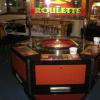
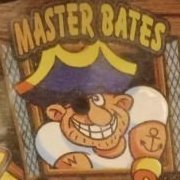
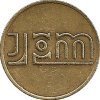
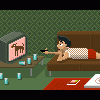

.thumb.jpg.500af9f1da22fc25a689aeb4daf35c66.jpg)

